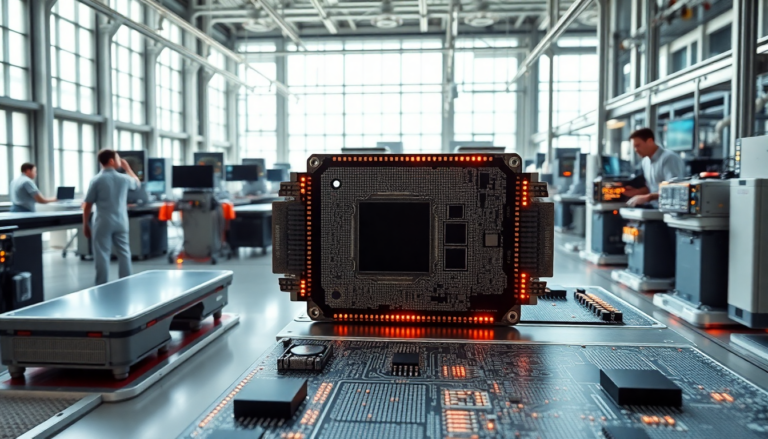Argomenti trattati
When you think of industry giants, Intel often springs to mind. Yet, beneath the surface of its storied legacy lies a pressing challenge: the Foundry division is working hard to prove its mettle. The tech landscape is shifting rapidly, and Intel is seemingly at a crossroads, striving to not just keep pace, but to lead in an increasingly competitive market. As the company pours billions into new technologies and manufacturing capacities, it’s clear that 2027 could mark a pivotal year for Intel.
Intel’s ambitious goals for the foundry division
The Foundry division of Intel is currently grappling with significant financial losses—billions each quarter, to be precise. This staggering number is a clear indicator of the high stakes involved in the semiconductor industry. Intel has set its sights on achieving breakeven by 2027, coinciding with the rollout of its new 14A manufacturing technology and the commencement of production on its 18A-P node. Both of these developments are crucial for Intel’s forward momentum. The 18A (1.8nm-class) fabrication process is expected to be a game-changer, with the first client PC processor, codenamed Panther Lake, scheduled for release later this year, followed by an anticipated ramp-up in production next year.
But let’s not get ahead of ourselves. The success of the 18A process is not just about Intel; it’s about proving to potential clients that the foundry can deliver. As the CFO, David Zinsner, noted at the J.P. Morgan Global Technology Conference, Intel needs to generate more external volume from its 14A technology compared to the 18A. The path is fraught with challenges, as committed volume from external customers is currently less than significant. I remember when I first heard about Intel’s ambitions in this domain—there was a palpable sense of excitement mingled with skepticism. Will they rise to the occasion?
The impact of advanced manufacturing technologies
As Intel navigates this challenging terrain, the company is also contemplating the use of High-NA EUV lithography for its 14A process technology. While this technology promises to enhance manufacturing capabilities, Zinsner candidly acknowledged that it might inflate initial costs. However, the hope is that the advantages it brings will outweigh these expenses in the long run. And let’s be honest; in the fast-moving world of semiconductors, the balance between cost and innovation can often feel like a tightrope walk.
Moreover, Intel’s strategic vision is not just about external customers; it also aims to ramp up in-house production of its own silicon. This is where the Panther Lake and Nova Lake CPUs come into play. By intensifying internal production, Intel hopes to improve its profit margins and optimize its production capacities. It’s a gamble that could pay off handsomely if executed correctly.
Future prospects and market dynamics
Looking ahead, Intel’s roadmap to profitability seems to hinge on a few key factors. For starters, breakeven for the Foundry division only necessitates low- to mid-single-digit billions in annual external revenue. Most of the anticipated volume for the 18A process is expected to stem from Intel’s internal products, while the success of the 14A technology will be critically dependent on external adoption. The strategy also includes revenue from advanced packaging and partnerships with companies like UMC and Tower.
As many in the tech community know, the semiconductor industry is notorious for its ups and downs. However, Intel is committed to its ‘smart capital’ model, which aims to balance internal and external wafer sourcing. This approach is essential for ensuring efficiency and cost control. Zinsner’s assurance that they’re on track to achieve breakeven by 2027 is a testament to their strategic planning, albeit with a hint of cautious optimism.
I can’t help but think back to the early days of semiconductor manufacturing. The landscape was vastly different, yet the competitive spirit remains the same. Intel’s journey is reminiscent of those days—filled with ambition, uncertainty, and the ever-looming question: can they adapt and thrive? Only time will tell, but one thing’s for sure: the stakes have never been higher.

